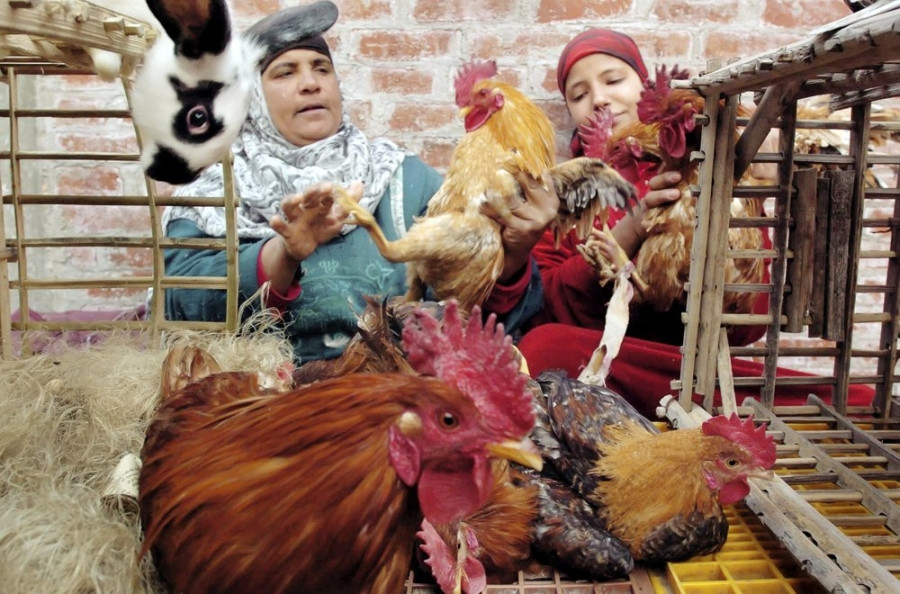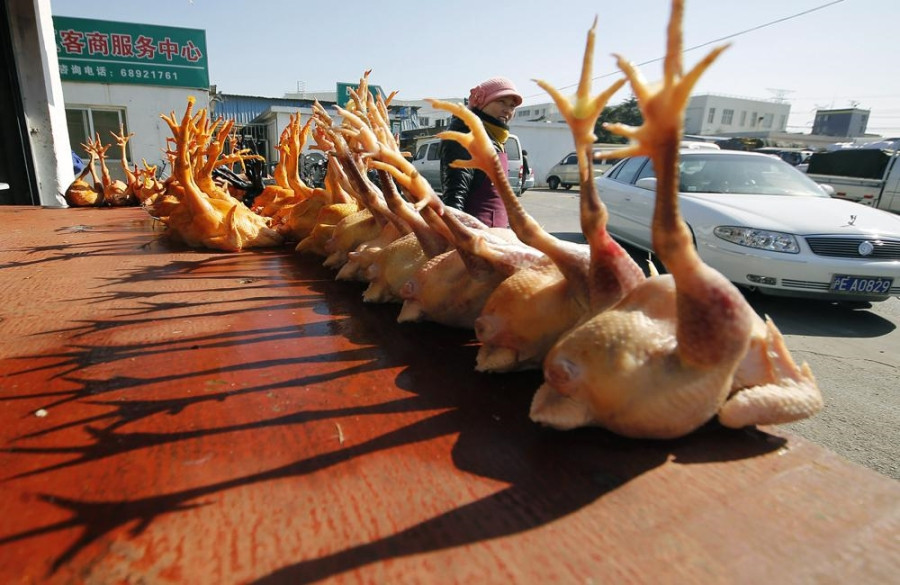Bird flu has spread to new locations around the globe. Outbreaks of the virus have been reported in North America, South America, Europe, Asia, and Africa. It is not immune to summer heat or winter cold.

Chicken seller in Tanta village, Egypt. Photo: AP
Reuters (UK) spoke with more than 20 experts and farmers on four continents, who said the prevalence of bird flu viruses in nature is a sign that outbreaks will not soon decrease on poultry farms.
This poses an increasing threat to the world's food supply, and they warn that farmers must treat the disease as a serious risk all year round, rather than focusing prevention efforts only during spring, when wild bird migration occurs.
The strain that arrived in the US in early 2022 is genetically similar to cases in Europe and Asia. The total number of bird deaths in the US in 2022 was 58 million. The virus is often fatal to poultry, with entire flocks often culled when just one bird tests positive. Vaccinations are not a simple solution: they can reduce but not eliminate the threat of the virus.
On February 15, Argentina and Uruguay declared a national sanitary emergency after officials confirmed the first cases in the two countries. Argentina detected the virus in wild birds, while dead swans in Uruguay tested positive for the bird flu virus.
The United States, Britain, France and Japan are among the countries that have suffered record poultry losses over the past year, leaving some farmers feeling helpless. "Bird flu has occurred even in new farms with modern equipment and no windows, so all we can do now is pray to God to prevent an outbreak," said Shigeo Inaba, who raises chickens for meat in Ibaraki Prefecture, Japan.
Egg prices hit record highs after a bird flu outbreak in 2022 killed tens of millions of hens, depriving some of the world’s poorest countries of access to eggs, a cheap source of protein at a time when the global economy is reeling from high inflation. Experts say wild birds are largely responsible for spreading the virus. Waterfowl such as ducks can carry the disease without dying and pass it on to poultry.
Experts say high levels of the virus in many waterfowl and wild birds mean poultry are now at high risk year-round. "It's a new war," said Bret Marsh, a veterinarian in Indiana.
Wild birds have spread the disease further and wider than ever before, potentially carrying record amounts of the virus, said Gregorio Torres of the Paris-based World Organization for Animal Health. Torres told Reuters the virus had changed from previous outbreaks to a more transmissible form.
Mr Torres could not confirm whether the bird flu virus was circulating in wild birds worldwide, although other experts said it was circulating in some birds in places like the US. The World Health Organization (WHO) said the risk to humans was low.
The circulating form of the virus infects more wild birds than previous versions, including those that do not migrate far, said David Suarez of the US government’s Southeast Avian Research Laboratory. “Infection of such ‘resident’ birds is allowing the virus to persist throughout the year where it did not previously,” he said.
Some experts suspect climate change may have contributed to the global spread of bird flu by altering the migration routes and habitats of wild birds.
Black vultures, which previously avoided the disease in the southern United States, are now among the species affected, said David Stallknecht of the University of Georgia. The virus has also spread to mammals such as foxes, bears and seals.

Chickens are displayed for sale at a market in Shanghai, China. Photo: AP
High concentrations of the virus in birds such as blue-winged teals and long-distance migratory ducks have spread the virus to new parts of South America, with countries including Peru, Ecuador and Bolivia reporting their first cases in recent months, Stallknecht said.
Ecuador's Ministry of Agriculture and Livestock imposed a three-month animal health emergency on November 29, 2022, two days after the first case was detected. The agency said more than 1.1 million birds have died so far.
Bird flu cases in Uruguay and Bolivia have pushed the disease closer to the borders of the world’s top chicken exporter, Brazil. Brazil’s Agriculture Minister Carlos Favaro said on February 15 that the country had investigated three suspected cases, but the tests came back negative. “Everyone is focused on preventing the flu from entering our country,” said Gian Carlos Zacchi, a chicken farmer in Chapecó, Santa Catarina state.
Farmers are trying unusual tactics to protect their birds, with some using loud machines to scare away wild birds. In Rhode Island, egg producer Eli Berkowitz has sprayed goose droppings on his farm walkways with Lysol in case they contain the virus. He has also restricted visitors to his farm. Berkowitz said he is preparing for March and April, when migration season will pose a greater risk to birds.
According to Tin Tuc Newspaper